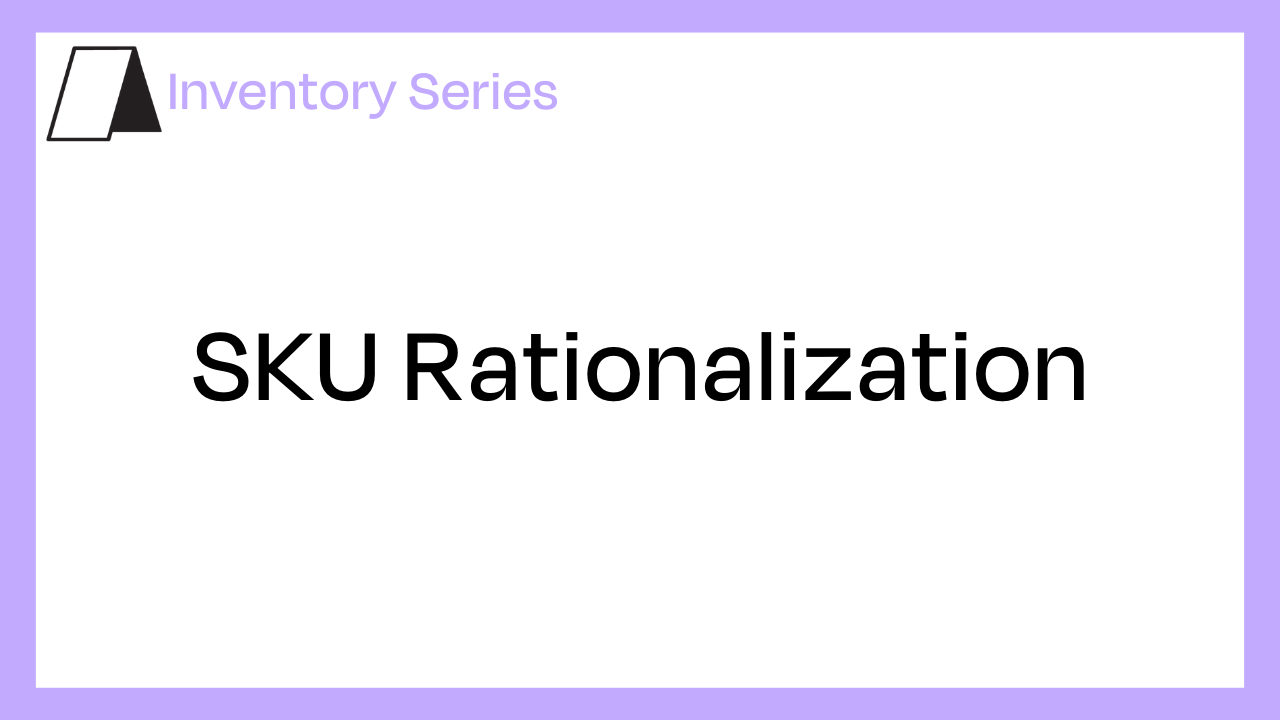
Inventory Series: SKU Rationalization
Jan 31, 2022Inventory Management Series: How to Be a Rock Star at SKU Rationalization.
SKU Rationalization is a process that allows merchants to re-assess the profitability and value of the products they have in stock. Keyword: Process.
Why is it a process? Because it requires ongoing optimization. As many retailers know it’s not a ‘one-size-fits-all’ solution even in industries as niche as Canadian recreational cannabis retail.
When inventory outpaces sales it can lead to a host of issues. From tying up working capital, throwing off forecasting, damaged partner relationships, loss of interest and perceived ‘freshness’ of stock, and degradation of product quality.
Some retailers turn to reactive measures to maintain profitability. Discounting to drive inventory velocity. This often shows up as a growing percentage of total revenue lost to discounts. Retail historically has used promotions and discounts as levers to balance inventory levels and get slow-moving products out the door.
Data from Headset represents the number of units sold and revenue in four provinces. In markets with more store density, we often see a higher discount percentage. One of the factors that may impact this is the focus spent on new SKUs, while not maintaining the sell-through of existing inventory.
A proactive approach is to rationalize SKUs held - on a regular cadence - to support highly-curated or hyper-specific inventories that are fresh. This in turn drives strong velocity. In the context of expansion, franchising, diversification, acquisitions, or strategic growth - SKU rationalization is an integral part of sustainable retail operations.
High-level First Impressions
Digging deep into categories isn’t the only way to get information. High-level observations are usually the best to study first:
- What’s the percentage breakdown of your current inventory between categories and sales?
- Has it changed and why?
- Does it reinforce your buying strategy, or highlight an opportunity?
- Does it match buying trends?
- Does it match weekly/monthly/yearly sales?
All of these questions can be a starting point for larger discussions around SKU rationalization, and strategic development of buying strategies.
Canadian Cannabis products, some with legacy strains or splashy celebrity backing, are being launched constantly - forcing you to keep a reverent eye on these new brands and products to ensure they don’t disrupt metrics for weeks or even months at a time if they’re in the wrong category or a missed opportunity.
Focus on Categories
It’s more challenging to gain actionable insights by looking at inventory as a whole. Typically, when you’re able to drill down into specific categories it allows you to pull actionable insights.
Insights, not data, drive action. Categorization makes the information more digestible.
How you divide products into categories is not rigid. This should be a custom process per retailer. Especially in new and emerging industries. In cannabis, we see significant category changes from quarter to quarter. SKUs don’t need to fit in only one box - but the overlap is where you can start finding truly innovative trends between and within categories. Now, how do you put this into practice?
Design Categories for You
Historically many cannabis retailers have broken flower into three categories, Indica, Sativa, and Hybrid. As the on-hand SKUs grow in flower, these categories get chunky. Sub-categorizations, or leading with smaller categories like the examples below allow you to look at a smaller sample size:
- Strains
- THC Percentages
- CBD Percentages
- Terpene Profiles
Categories can be further influenced by non-product-based metrics like demographics, local preferences, and whether clients are experienced or canna-curious. For merchants servicing many first-time buyers, low-THC would be a fruitful category to track, whether it’s flower or edibles and if it is worthy of investment and SKU depth.
A Closer Look at Categories
SKU rationalization is all about profits, actual and potential - margin is the crown metric when it comes to analyzing individual categories.
Were goals met? (If you don’t yet have category-specific margin goals, stop reading and do that RIGHT NOW). If goals were or were not met, why or why not? Were SKUs able to move at a regular pace, or did an outlier or unique offering in a category skew metrics for better or worse?
When answering questions like these, take stock of both passive and active factors that dictate margins. For example, active promotions like discounting have predictable outcomes; passive factors, like a supply chain or product availability, are out of your hands and often unpredictable.
SKU Rationalization as a Process
Like Jeopardy! SKU rationalization is about asking the right questions, with the answers sitting in front of your face. Every cannabis retail location will have a unique set of questions that provide the most actionable success information.
To break it right down, here are some steps:
- Define and analyze categories from a high level
- Subdivide categories to suit the needs of your clientele
- Look at many timeframes: weekly, monthly, yearly
- Define clear goals on how you want the categories to perform
- Look for outliers that inform your strategy
- Adjust, adapt, and optimize
- Call Vetrina Group if you’re struggling with Steps 1-7
If it isn’t clear already - SKU rationalization is a process that provides answers that are as good as your questions and goals. It can take into account dozens, even hundreds of metrics, from sales velocity, inventory on hand, promotion, features, marketing, and even customer service objectives.
The world might be crazy right now, but trends arise and old habits die hard. Predictability and sustainability arise from a clear strategy and goals. Inventory is a mix of test and iteration.
Like learning to swim, an adaptive and complete SKU rationalization process can save you from drowning in a sea of data or sunk cash flow.
Tactical insights to become
a Cannabis Retail Insider!
Access expert insights in one easy-to-digest
and follow-along newsletter.
We hate SPAM. We will never sell your information, for any reason.

